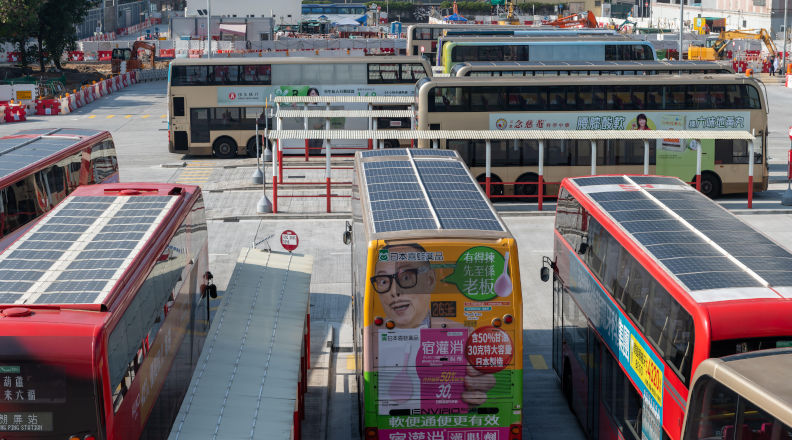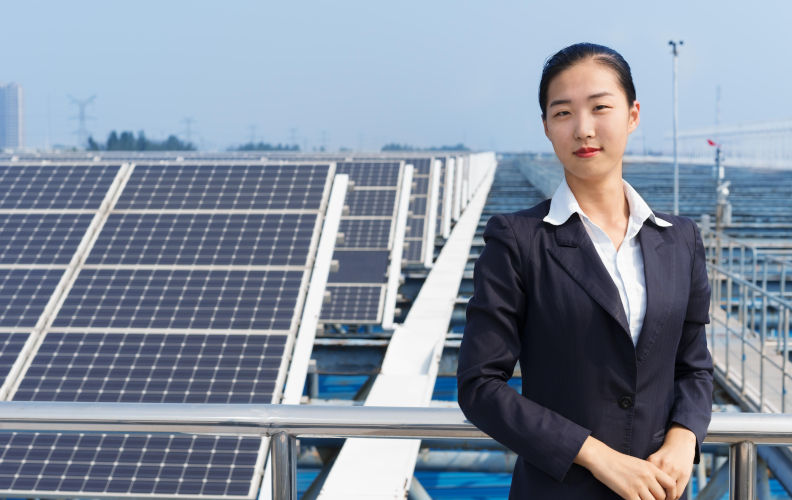China’s not-so-quiet energy revolution: Towards the world’s first industrial electrostate
April 30, 2025
In 2023, China increased its deployment of solar and wind energy three-fold. This trend accelerated in 2024, with China installing nearly 65% of the world’s new low emission energy electricity generation.
The world’s largest industrial economy is now on track to become the world’s first major industrial electrostate by around 2040, based on low-cost, low-emission electrical energy generation at unprecedented scale.
China is the world’s largest industrial economy. In 2024 China’s share of global manufacturing output (31.6%) was twice that of the US (15.9%) and comparable to the combined output of the US, Japan, Germany, India and South Korea. By 2040, China’s share of global manufacturing is projected to increase to about 45% to 50%.
China dominates global industrial and manufacturing supply chains including:
- steel 55%
- aluminium 60%
- cement 50%
- solar PV modules 80%
- wind turbines 65%
- batteries 70-80%
- home appliances 60-70%
- shipbuilding 53%
- automobiles 40%
- tyres 47%
- plastics 33%
All these industries are energy-intensive and in 2023 China consumed 27.4% of global primary energy and 32% of global electricity generation. China’s energy-related greenhouse gas emissions were 35% of the global total.
In 2023 China dramatically pivoted its energy transition strategy to an accelerated deployment (three-fold) of solar and wind energy complemented by battery storage, while moderating its near-term and long-term targets for nuclear energy. In 2023, China installed 50% of the world’s new solar and wind energy generation.
In 2024, this trend was consolidated and further accelerated, when China installed nearly 65% of new global solar and wind energy generation.
New solar and wind generation installed by China in 2024 will produce about 550-600 terawatt-hours (TWh) of low emission electricity annually – more than twice the total annual output of Australia’s electricity generation (~250 TWh), and equivalent to the output of 55-60 large nuclear reactors.
China plans to maintain this accelerated rate of deployment for new solar and wind energy from 2025 to 2030, complemented by a quadrupling of the rate of battery storage installations, which reached 47 gigawatts (GW)/101 gigawatt-hours (GWh) in 2024.
The deployment of new nuclear generation is continuing at a steady, but much lower, rate, with ~50TWh of new nuclear generation (~10% of new solar and wind generation) planned to come online annually between 2025 and 2030.
By 2030, China’s annual electricity generation will increase from ~9,500TWh in 2023-24 to ~12,000TWh, accompanied by a significant reduction in emissions intensity. High-emission generation (primarily coal) will decline from 62% to ~48%, while low-emission generation (solar, wind, hydro and nuclear) will increase from 38% to ~52%.
A combination of increased storage (primarily batteries), ultra-high voltage transmission and market reforms is expected to improve the availability and utilisation of solar and wind generation by 2030.
Between 2030 and 2040, it is expected that deployment rates for solar, wind and nuclear energy and battery storage will be maintained or increased. By 2040, China’s annual electricity generation is projected to reach ~16,000TWh (more than half of total global electricity generation in 2024), with high emission generation declining to ~25% and low emission generation increasing to ~75%.
Low-emission generation will be dominated by solar (~30%) and wind (~26%), with hydro and nuclear each contributing ~9%. China’s combined solar and wind generation (~9000TWh) will be more than the International Atomic Energy Agency’s high forecast for total global nuclear generation by 2050 (~7700TWh).
If China sustains projected rates of deployment for new low-emission generation and progressive reduction of high-emission generation (~2% annually), it is expected that China’s share of global emissions could decline from the current 35% to ~20-25% by 2040.
In just 15 years, China will pivot from high-emission to low-emission electricity generation, while increasing total annual generation by ~70% to meet the demands of a rapidly electrifying economy.
Several key technology trends continue to enable and promote China’s rapid deployment of low emission electricity generation. The costs of solar, wind and battery technology continue to decline while performance improves.
The most dramatic recent development is in grid-scale battery storage. In late 2024, a major tender in China for grid battery storage achieved turnkey costs for 20-year managed battery storage of US$65-80/kWh – a 7-fold reduction in grid-scale battery costs in just seven years since the installation of the Tesla PowerPack 2 system in South Australia (~US$550/kWh).
Further, the operational life of grid batteries has more than doubled since 2017, and consequently the levelised cost of storage has now declined to the point where “solar baseload” electricity is becoming a technical and economic reality.
“Solar baseload” electricity utilises grid integration and long-discharge battery storage (eight hours) to provide a 24/7 reliable supply of solar-generated electricity. It is now estimated that China’s cost of “solar baseload” generation will be comparable to coal generation costs by the mid-2030s (~US$45/MWh) and significantly lower than China’s nuclear generation costs (~US$70/MWh), which are already considerably lower than nuclear generation costs in the rest of the world.
On the demand side of energy transition, continuing improvement in battery performance and reducing costs is enabling an accelerated transition to electric transport, with “New Energy Vehicles” (battery electric vehicles and plug-in hybrids) now accounting for more than 50% of new car sales in China, and significant sales of electric bicycles and tricycles.
China now has more than 550,000 “new energy” buses (>80% of the total bus fleet), with 100% electrification of urban buses having been achieved by 2023.

The trend to road vehicle electrification is now having a measurable impact in reducing China’s dependency on oil imports.
By 2040, China will be emerging as the world’s first major industrial “electrostate” – an economy in which low-emission electrical energy will be the dominant energy mode for most sectors of the economy.
